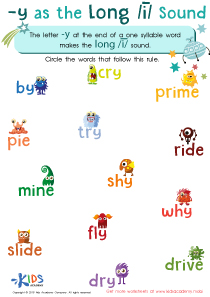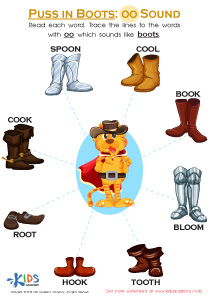Normal Middle Vowel Worksheets for Ages 5-7
4 filtered results
-
From - To
Our "Normal Middle Vowel Worksheets for Ages 5-7" are designed to nurture early reading skills in young learners. These engaging, printable activities guide children in identifying and using middle vowels, a crucial step in reading fluency. With colorful visuals and interactive exercises, kids effortlessly practice vowels: A, E, I, O, U. These worksheets encourage independent learning and reinforce phonetic concepts through repetition and playful interactions, fostering confident readers. Perfect for classroom or home use, they offer educators and parents invaluable tools to support literacy development in budding readers. Unlock your child's potential today with our expertly crafted resources!
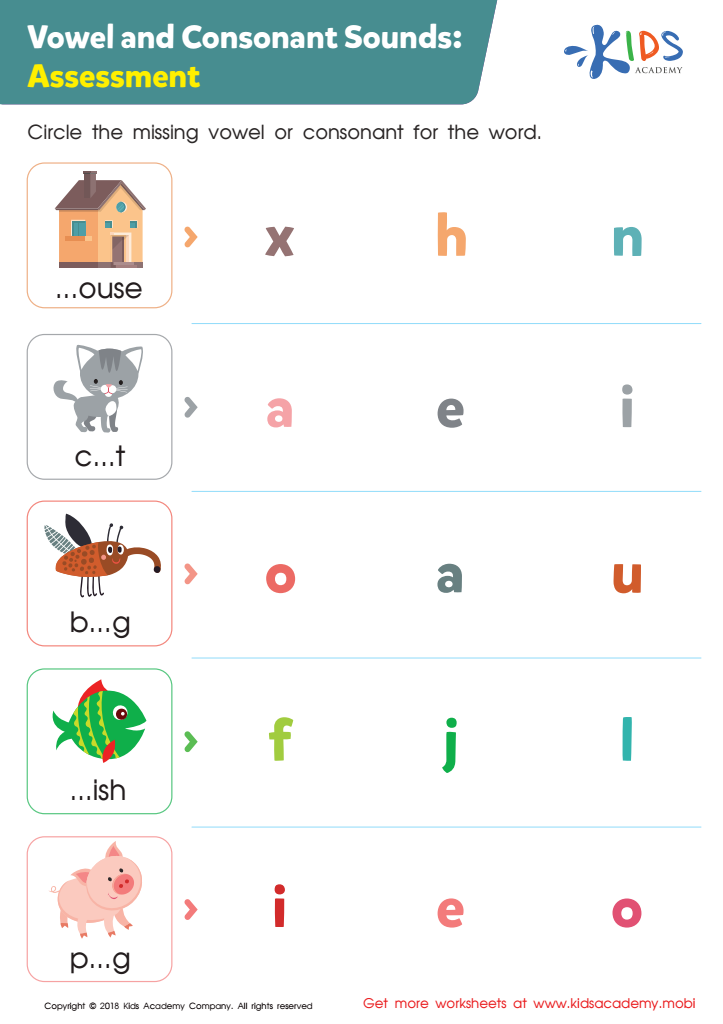

Vowel and Consonant Sounds: Assessment Worksheet
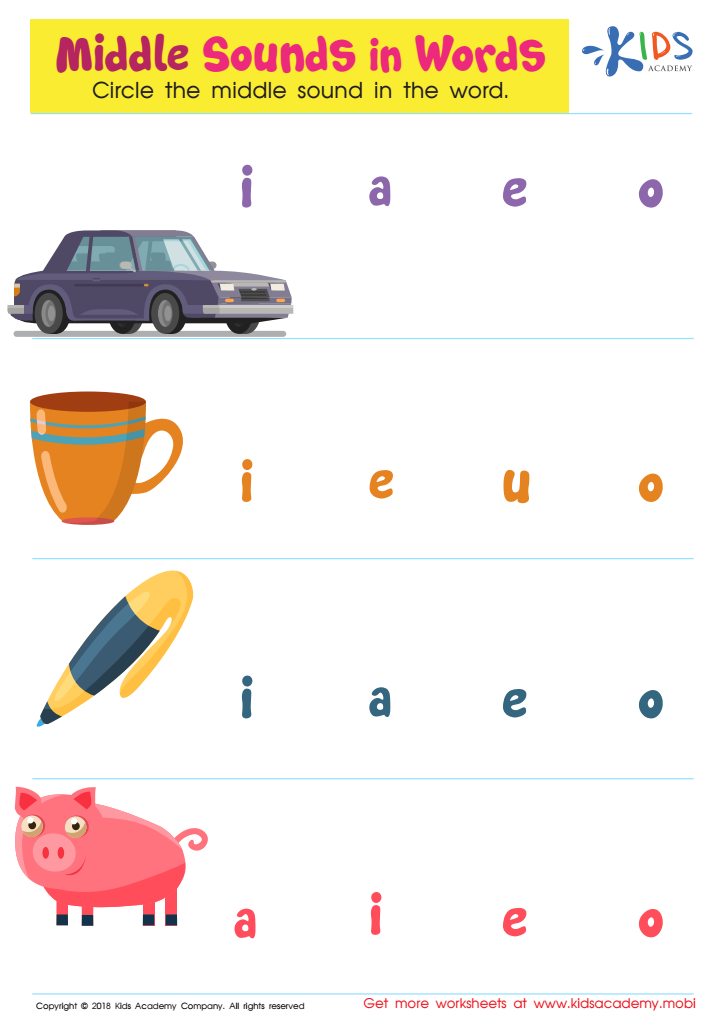

Middle Sounds in Words Worksheet
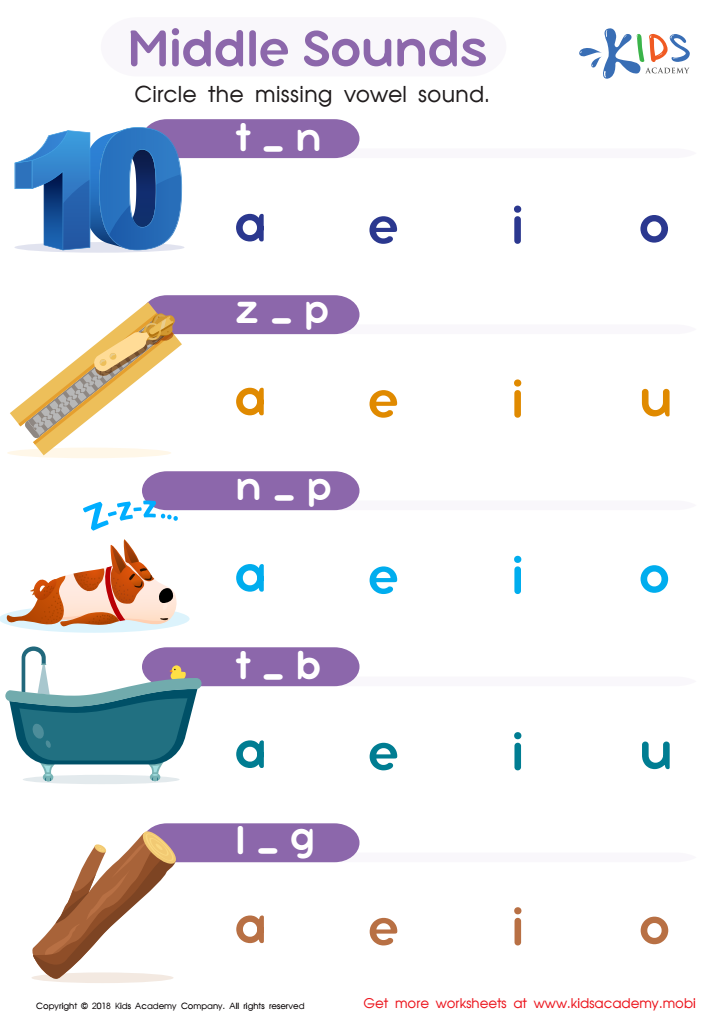

Middle Sounds Worksheet
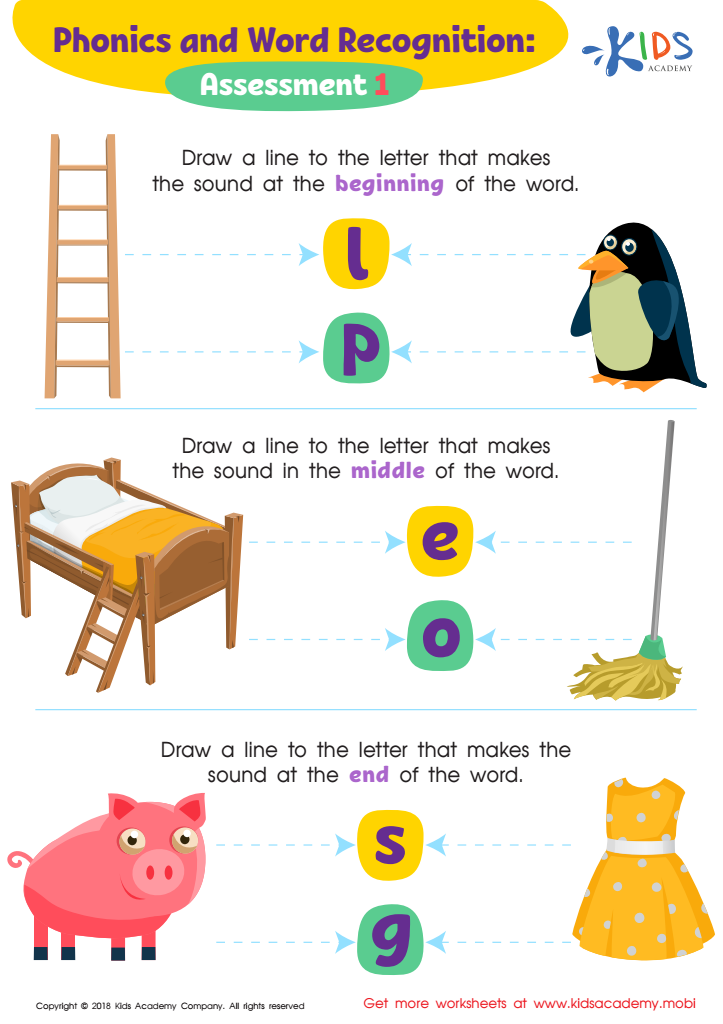

Phonics and Word Recognition: Assessment 1 ELA Worksheet
Caring about normal middle vowel development for children ages 5-7 is crucial as it impacts their reading and speaking abilities. The middle vowels - typically 'a,' 'e,' 'i,' 'o,' and 'u' in words - are foundational to English phonetics. Mastering these sounds supports children's decoding skills, enabling them to sound out words accurately when reading. This lays the groundwork for developing strong literacy skills, essential for academic achievement and effective communication.
For teachers and parents, focusing on middle vowel sounds can help identify and address potential language issues early. If a child struggles with these sounds, it could be an early indicator of difficulties such as dyslexia or speech impairments. Regular exposure and practice with middle vowels through engaging classroom activities, storytelling, and phonics games help reinforce their learning. This makes reading a more enjoyable and less frustrating experience, encouraging positive attitudes toward learning.
Moreover, proficiency in middle vowels aids in better pronunciation, allowing children to be more clearly understood by peers and adults, fostering self-confidence and social interaction. Overall, paying attention to and supporting normal middle vowel development equips children with the necessary tools for reading success and effective verbal communication, promoting their educational and social development.

 Assign to the classroom
Assign to the classroom




